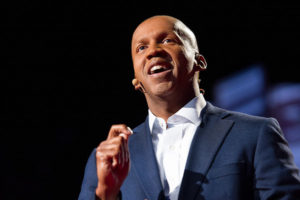A thousand words are worth a picture
September 1, 2017 • 29 Comments • Posted in blindness, memoir writing, Mondays with Mike, travel, writing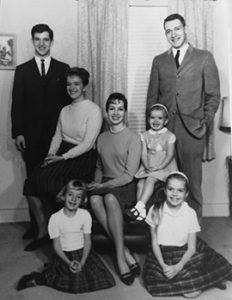
That’s Bobbie at the center of this Finke family photo, taken in late November, 1961. I’m the two-year-old sitting to her left.
My sister Bobbie died a month ago today. Mike wrote a tribute to her after we got home from her memorial service a few weeks ago. Today I’m sharing an excerpt from an essay we published in my newsletter –it’s about how writing helps me remember her.
My oldest sister Bobbie got married and moved away months after my first birthday. Bobbie was 20 years older than me, and when I was growing up, our age gap prompted people to ask whether she really felt like a sister to me. My answer was always the same. Well, yes – she’s been my sister my whole life!
During the ten-day lag between her death and her memorial service, the Finke nation (I am the youngest of seven and have oodles of nieces and nephews) dug through boxes of old photos to post pictures of Bobbie on Facebook. Friends and family members left comments about memories those photos evoked. You can well imagine that I would like to be able to see those photographs, too, but rest assured that my own reminiscences of Bobbie are not diminished by my inability to see them.
I owe that to writing.
When I think about Bobbie now, the episodes I’ve written about her are by far the most clear and vivid in my mind. Perhaps it’s the result of writing and rewriting, getting just the right verb, working and reworking each piece until it’s as true as I can make it. Maybe the saying is backwards.
Maybe a thousand words are worth a picture.
In writing my memoir Long Time No See, I revisited a short stay at Bobbie’s house while recovering from eye surgeries in 1985. That was a difficult exercise. But because I took the trouble to get it as right as I could, I can still feel the warmth of the sun on my skin, breathe in the mix of dirt and foliage from her garden, savor the taste of those breakfasts she made me every morning, hear the laughter and voices of my other sisters gathering with us there, and feel my little niece Jennifer’s hand guiding me so, so carefully to the bathroom, placing my hand on the toilet roll when we got there so I’d know where I was.
Writing about that time again now reminds me of how courageous my oldest sister was. I was seven years old when diagnosed with Type 1 diabetes. Bobbie was diagnosed a year after that, when she was 28. Years would go by before complications set in, and when I was losing my eyesight, Bobbie was valiant enough to take care of me in her home. That, even though it meant facing what could possibly be her future.
As the saying goes, she didn’t blink.
Mike and Seeing Eye dog Whitney flew with me and my sister Bev to the memorial service in South Carolina a few weeks ago. Two members of the Finke nation flew in from Brooklyn. Others flew in from Orlando, and more drove in from Louisville, from Indianapolis, even as far away as Minneapolis. We all loved Bobbie, and for me, writing helps to hold Bobbie especially close.
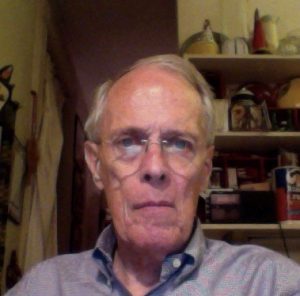
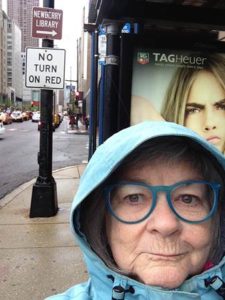
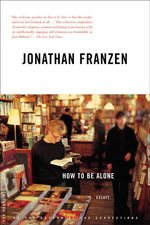
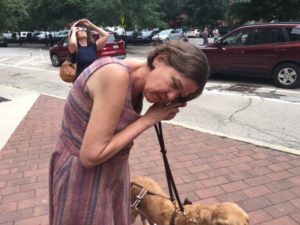 WBEZ (Chicago Public Radio) had me come to the studio yesterday morning to talk about using the
WBEZ (Chicago Public Radio) had me come to the studio yesterday morning to talk about using the 